Open a spice rack, and the letter P almost jumps out at you. Peppercorns grinding fresh over a salad, paprika dusted across roasted potatoes, a pinch of parsley brightening the plate—it’s the alphabet at its most practical and powerful. These ingredients aren’t rare treasures tucked away in specialty shops; they’re the everyday essentials we reach for without thinking.
But “P” doesn’t stop at the familiar. It also hides surprises: smoky peppers that define entire cuisines, bold blends that wake up simple dishes, and herbs that bridge the gap between garnish and backbone. In this article, we’ll explore the spices, seasonings, and herbs that begin with P, and see just how much this single letter does to shape the way we cook.
Spices that Start with P
1. Black Pepper (Piper nigrum)
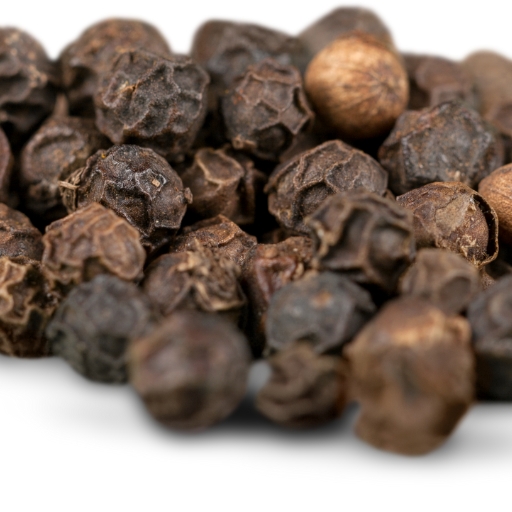
- Origin & History: Native to India’s Malabar Coast; once called “black gold” in global trade.
- Appearance: Small, wrinkled black peppercorns.
- Taste & Aroma: Sharp, pungent, woody.
- Culinary Uses: Universally used in savory dishes, sauces, and rubs.
- Health Benefits: Aids digestion and enhances nutrient absorption.
- Fun Fact: In medieval Europe, peppercorns were sometimes used as currency.
2. White Pepper
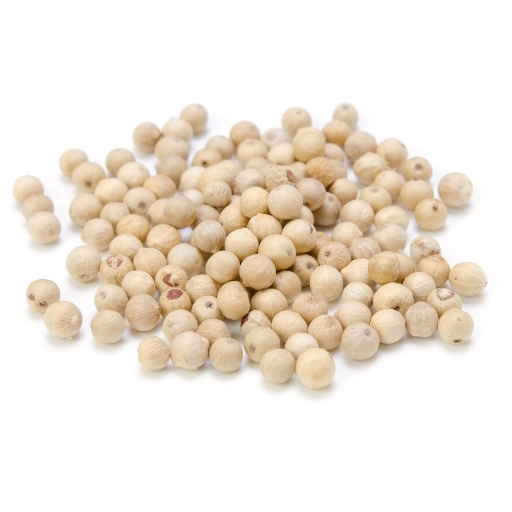
- Origin & History: From the same plant as black pepper; outer skin removed before drying.
- Appearance: Smooth, pale beige peppercorns.
- Taste & Aroma: Milder, earthier than black pepper.
- Culinary Uses: Cream sauces, soups, mashed potatoes.
- Health Benefits: Contains antioxidants and aids gut health.
- Fun Fact: Often used in light-colored dishes to avoid black flecks.
3. Green Peppercorns
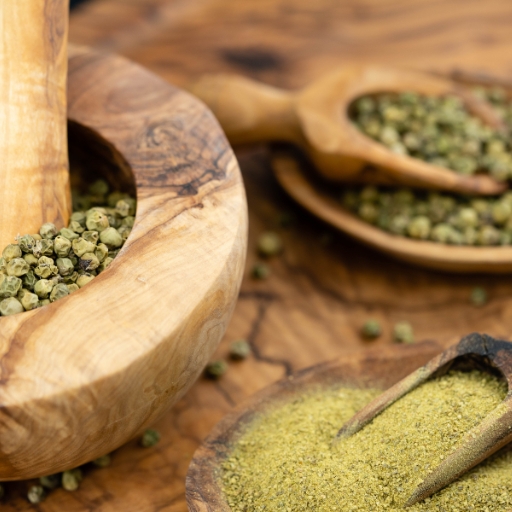
- Origin & History: Harvested unripe from the pepper vine, often preserved.
- Appearance: Small, green, soft peppercorns.
- Taste & Aroma: Mild, fresh, slightly fruity.
- Culinary Uses: Sauces, pickles, and creamy dishes.
- Health Benefits: Similar digestive benefits to black pepper.
- Fun Fact: Popular in French “steak au poivre vert.”
4. Pink Peppercorns
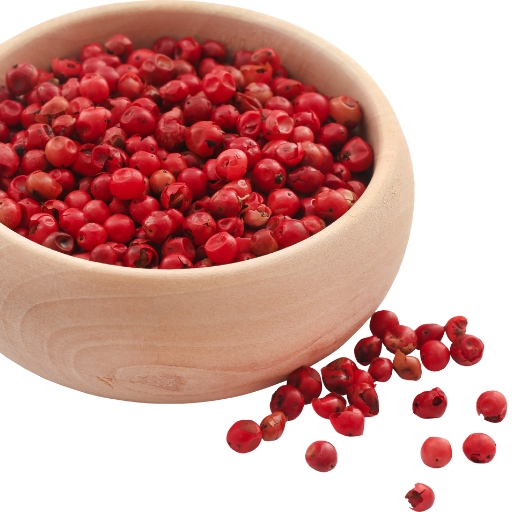
- Origin & History: From Peruvian and Brazilian pepper trees (not true pepper).
- Appearance: Small, pink-red berries.
- Taste & Aroma: Sweet, fruity, lightly spicy.
- Culinary Uses: Sauces, fish dishes, cocktails, desserts.
- Health Benefits: Antioxidant-rich, supports immunity.
- Fun Fact: Often blended with black pepper for gourmet mixes.
5. Paprika
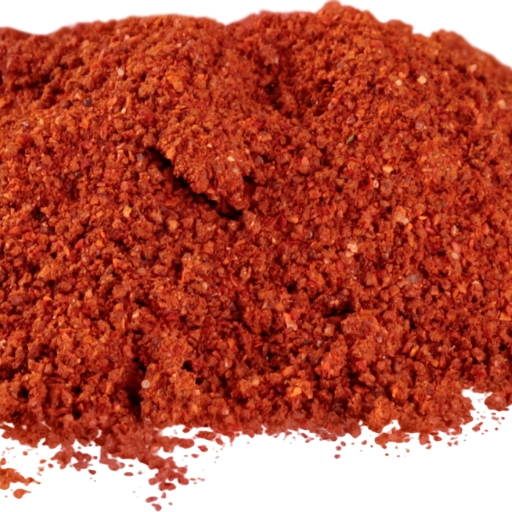
- Origin & History: Originated in Central America; developed into a staple in Hungary and Spain.
- Appearance: Bright red powder from dried peppers.
- Taste & Aroma: Ranges from sweet to smoky to hot.
- Culinary Uses: Goulash, stews, rice dishes, rubs.
- Health Benefits: Rich in vitamin A and capsaicin.
- Fun Fact: Hungarian cuisine has eight official grades of paprika.
6. Pimentón (Spanish Smoked Paprika)
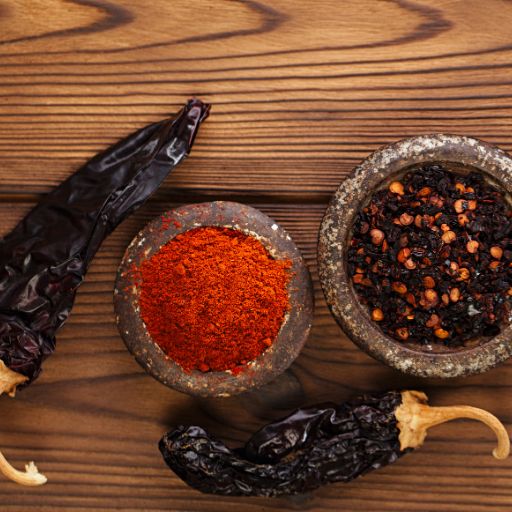
- Origin & History: Produced in Spain, especially La Vera region.
- Appearance: Deep red powder.
- Taste & Aroma: Smoky, earthy, mildly sweet.
- Culinary Uses: Paella, chorizo, stews, marinades.
- Health Benefits: Provides antioxidants and carotenoids.
- Fun Fact: Monks in Spain began smoking peppers over oak to preserve them.
7. Poppy Seeds
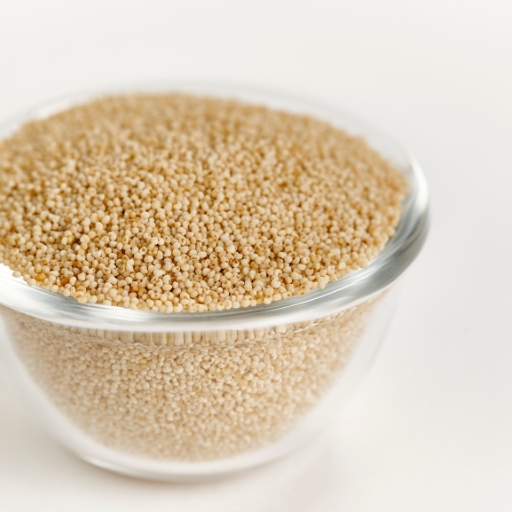
- Origin & History: Cultivated since ancient Mesopotamia.
- Appearance: Tiny, round, blue-gray or white seeds.
- Taste & Aroma: Nutty, mild, slightly sweet.
- Culinary Uses: Breads, cakes, pastries, curries.
- Health Benefits: Rich in calcium, iron, and healthy fats.
- Fun Fact: The Czech Republic has one of the highest per capita poppy seed consumptions.
8. Panch Phoron (Indian Five-Spice)
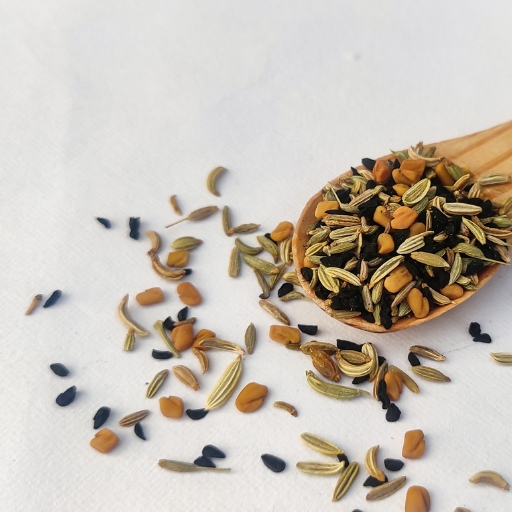
- Origin & History: Traditional blend from Bengal, India.
- Appearance: Mix of fenugreek, nigella, cumin, fennel, and mustard seeds.
- Taste & Aroma: Earthy, nutty, aromatic.
- Culinary Uses: Tempering curries, lentils, and vegetables.
- Health Benefits: Aids digestion and balances metabolism.
- Fun Fact: Always added whole to hot oil before cooking.
9. Pepperberry (Tasmanian Pepper)
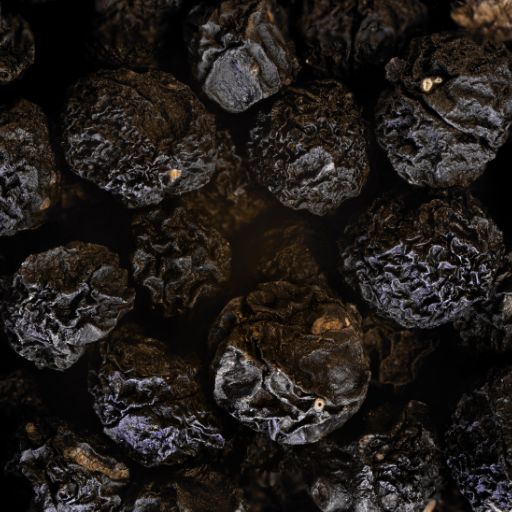
- Origin & History: Native to Australia; also called mountain pepper.
- Appearance: Small, black-purple berries.
- Taste & Aroma: Spicy, fruity, with a peppery bite.
- Culinary Uses: Sauces, meats, chutneys.
- Health Benefits: Antibacterial and antioxidant-rich.
- Fun Fact: Indigenous Australians used it both as food and medicine.
10. Piri Piri (Bird’s Eye Chili)
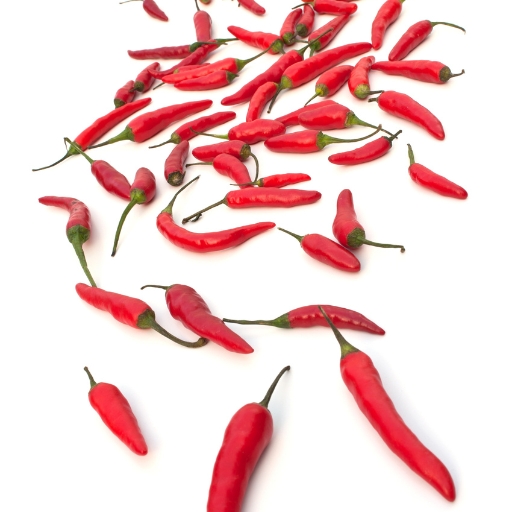
- Origin & History: Grown in Africa; name means “pepper pepper” in Swahili.
- Appearance: Small, thin red chilies.
- Taste & Aroma: Fiery hot with citrus undertones.
- Culinary Uses: Hot sauces, marinades, stews.
- Health Benefits: Capsaicin boosts metabolism and immunity.
- Fun Fact: Famous for the Portuguese piri piri chicken.
11. Pomegranate Powder
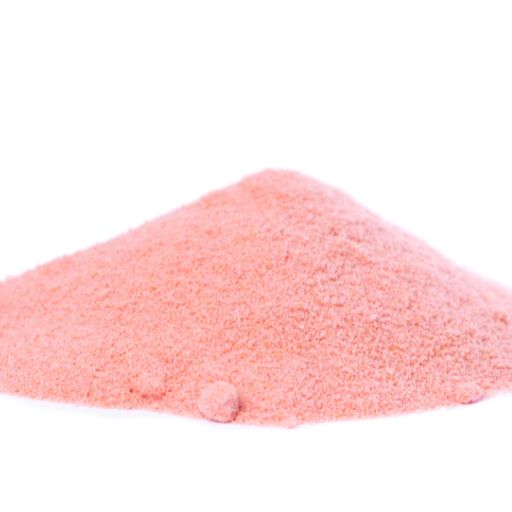
- Origin & History: Used in Persian and Indian cooking.
- Appearance: Pink-red powder from dried seeds.
- Taste & Aroma: Tart, fruity, slightly sweet.
- Culinary Uses: Curries, chutneys, soups, desserts.
- Health Benefits: Packed with antioxidants and vitamin C.
- Fun Fact: In India, dried seeds are known as anardana and used as a souring spice.
12. Pink Himalayan Salt (as Spice)

- Origin & History: Mined in the Punjab region of Pakistan.
- Appearance: Pink crystals, coarse or fine.
- Taste & Aroma: Salty, slightly mineral.
- Culinary Uses: Seasoning meats, salads, soups, and finishing dishes.
- Health Benefits: Contains trace minerals like potassium and magnesium.
- Fun Fact: Formed over 250 million years ago from ancient seabeds.
Seasonings that Start with P
1. Poultry Seasoning
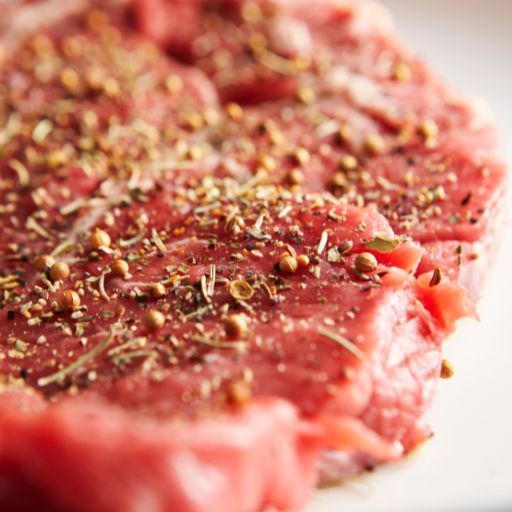
- Origin & History: Developed in Europe and America as a ready-made blend for roast birds.
- Appearance: Greenish-brown fine mix.
- Taste & Aroma: Savory, herby, slightly peppery.
- Culinary Uses: Roasted chicken, turkey, stuffing, soups.
- Health Benefits: Sage and thyme aid digestion.
- Fun Fact: Some blends are still based on recipes dating back to the 1800s.
2. Pizza Seasoning
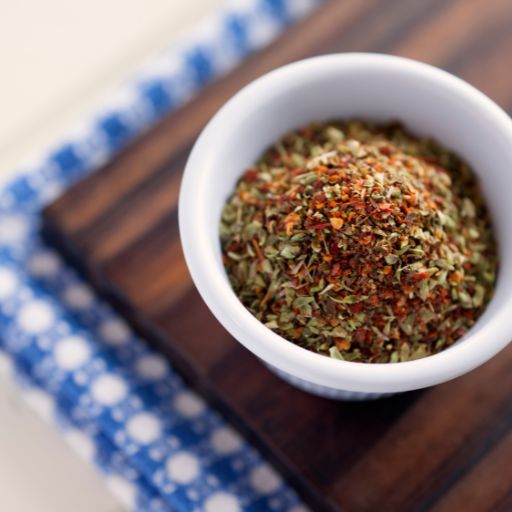
- Origin & History: A modern Italian-American blend created to mimic pizzeria flavors.
- Appearance: Coarse dried herb mix, green and red specks.
- Taste & Aroma: Herbal, garlicky, slightly spicy.
- Culinary Uses: Pizza, pasta sauces, garlic bread, marinades.
- Health Benefits: Oregano and basil add antioxidants.
- Fun Fact: In the U.S., pizza seasoning surged in popularity alongside frozen pizzas.
3. Pickling Spice
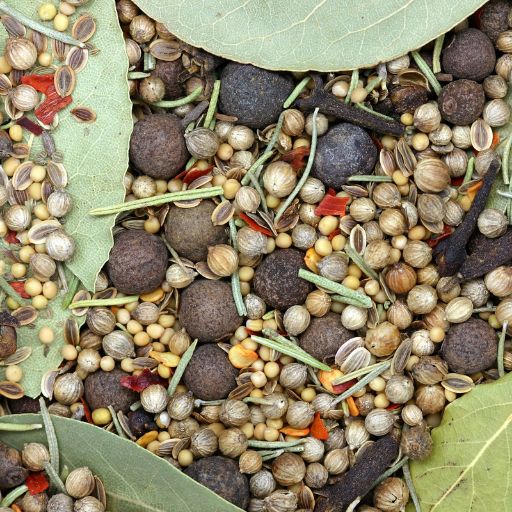
- Origin & History: Traditional in European and American kitchens for preserving foods.
- Appearance: Coarse, colorful mix of whole spices.
- Taste & Aroma: Tangy, aromatic, slightly sweet-spicy.
- Culinary Uses: Pickles, corned beef, chutneys.
- Health Benefits: Many spices inside (mustard, bay, pepper) support digestion.
- Fun Fact: Recipes vary wildly—some even include cinnamon sticks and cloves.
4. Piri Piri Seasoning
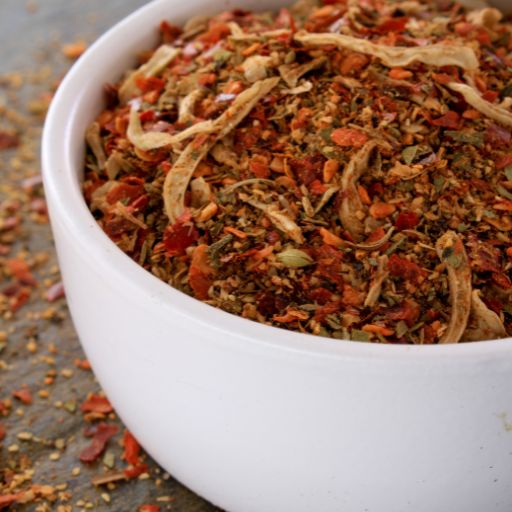
- Origin & History: Portuguese-African blend, rooted in Mozambique and Angola.
- Appearance: Red-orange spice mix with chilies and herbs.
- Taste & Aroma: Fiery, smoky, tangy.
- Culinary Uses: Chicken marinades, grilled seafood, sauces.
- Health Benefits: Chili boosts circulation and metabolism.
- Fun Fact: The blend’s fame spread globally through Portuguese explorers.
5. Pumpkin Pie Spice
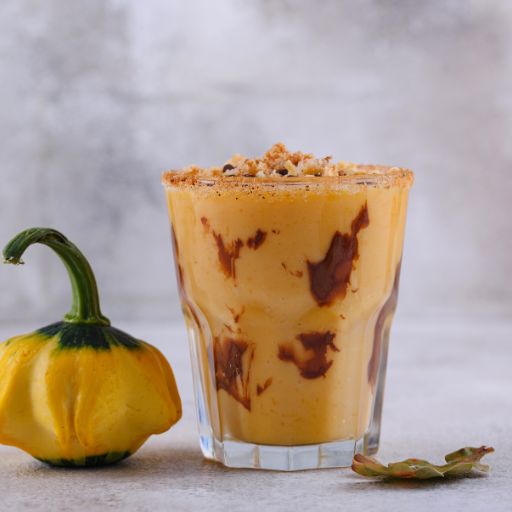
- Origin & History: American blend created for autumn baking traditions.
- Appearance: Warm brown powder.
- Taste & Aroma: Sweet, cinnamon-forward, with nutmeg and clove notes.
- Culinary Uses: Pies, lattes, cakes, roasted vegetables.
- Health Benefits: Cinnamon and nutmeg provide antioxidants.
- Fun Fact: Popularized by canned pumpkin puree companies in the mid-20th century.
6. Puerto Rican Adobo Seasoning
- Origin & History: Staple in Puerto Rican cooking, adapted from Spanish influences.
- Appearance: Yellowish blend with garlic, oregano, turmeric, and pepper.
- Taste & Aroma: Savory, garlicky, earthy.
- Culinary Uses: Marinades for meats, beans, stews, rice dishes.
- Health Benefits: Garlic and turmeric are anti-inflammatory.
- Fun Fact: Every family tweaks the recipe slightly, making it a true “house blend.”
7. Paprika Rub (Hungarian / Spanish)
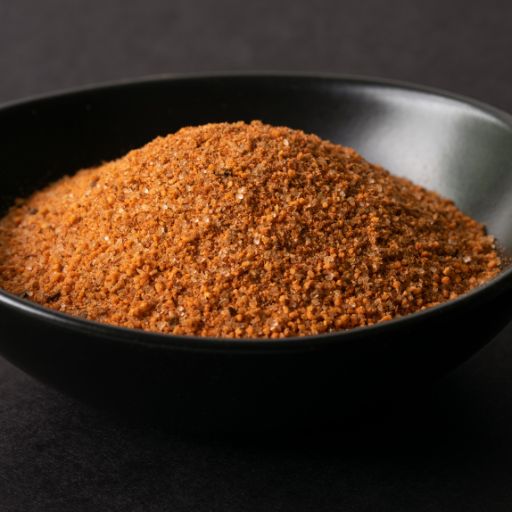
- Origin & History: Popular in Central and Southern Europe.
- Appearance: Bright red powder or coarse rub.
- Taste & Aroma: Sweet, smoky, or hot depending on type.
- Culinary Uses: Meats, fish, soups, stews.
- Health Benefits: Rich in carotenoids and vitamin A.
- Fun Fact: Paprika is so beloved in Hungary that it’s considered a national spice.
8. Pesto (Seasoning / Sauce)
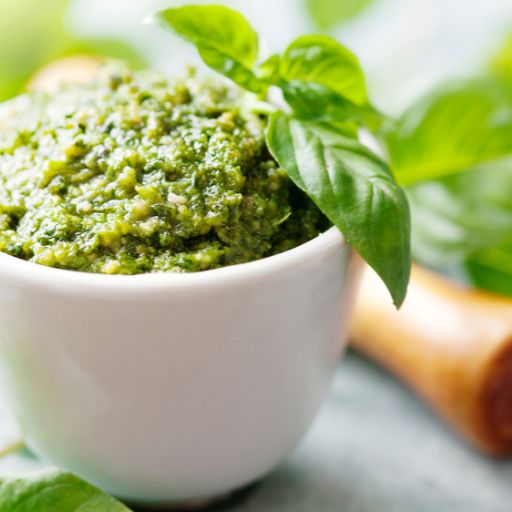
- Origin & History: Originated in Genoa, Italy, traditionally made with basil, garlic, pine nuts, and olive oil.
- Appearance: Bright green paste.
- Taste & Aroma: Fresh, garlicky, nutty, herbal.
- Culinary Uses: Pasta, sandwiches, dips, marinades.
- Health Benefits: Olive oil and nuts provide heart-healthy fats.
- Fun Fact: The word “pesto” comes from pestare, meaning “to crush” in Italian.
Herbs that Start with P
1. Parsley
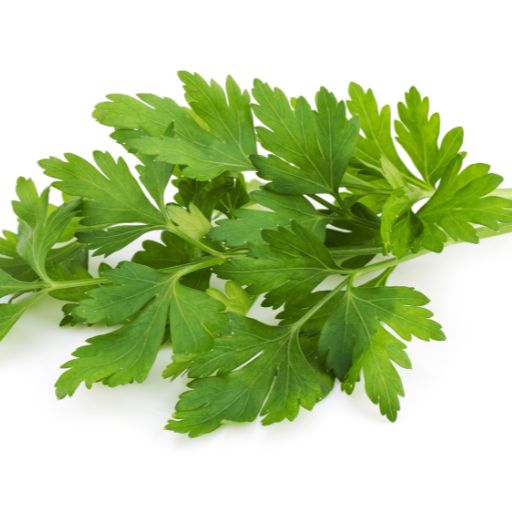
- Origin & History: Native to the Mediterranean; widely used since ancient Greece and Rome.
- Appearance: Curly or flat-leaf green leaves.
- Taste & Aroma: Fresh, grassy, slightly peppery.
- Culinary Uses: Garnish, sauces (chimichurri, tabbouleh), soups, stews.
- Health Benefits: Rich in vitamin K and vitamin C.
- Fun Fact: Flat-leaf parsley has stronger flavor than curly parsley.
2. Peppermint
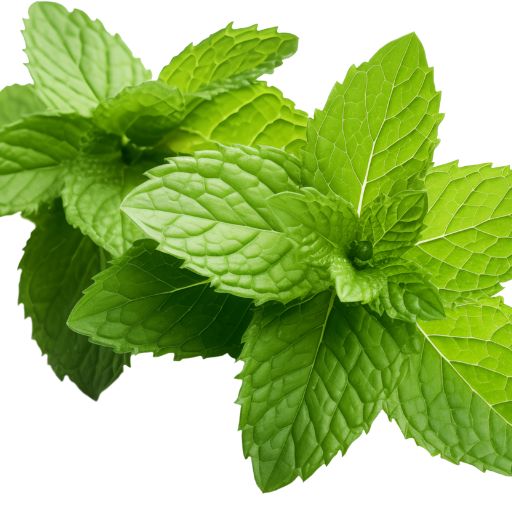
- Origin & History: Hybrid of spearmint and watermint; cultivated worldwide.
- Appearance: Dark green serrated leaves with purplish stems.
- Taste & Aroma: Strong, cool, menthol-like.
- Culinary Uses: Teas, desserts, candies, cocktails.
- Health Benefits: Soothes digestion and relieves headaches.
- Fun Fact: Ancient Egyptians placed peppermint leaves in tombs as offerings.
3. Purslane
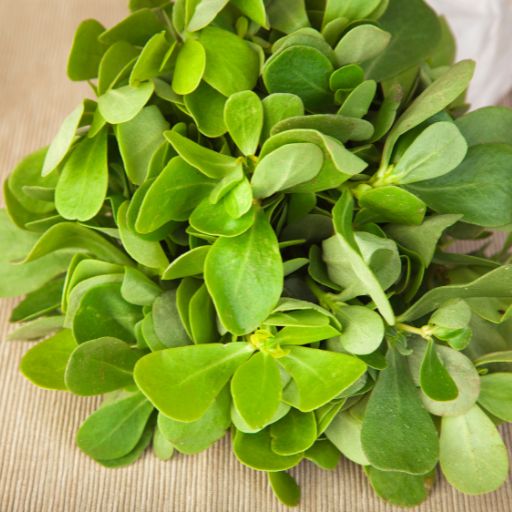
- Origin & History: Native to Asia and the Mediterranean; eaten as a wild green worldwide.
- Appearance: Succulent green leaves with reddish stems.
- Taste & Aroma: Tart, lemony, slightly salty.
- Culinary Uses: Salads, stews, stir-fries, soups.
- Health Benefits: Rich in omega-3 fatty acids and vitamin A.
- Fun Fact: Gandhi reportedly ate purslane regularly for its health benefits.
4. Perilla (Shiso)
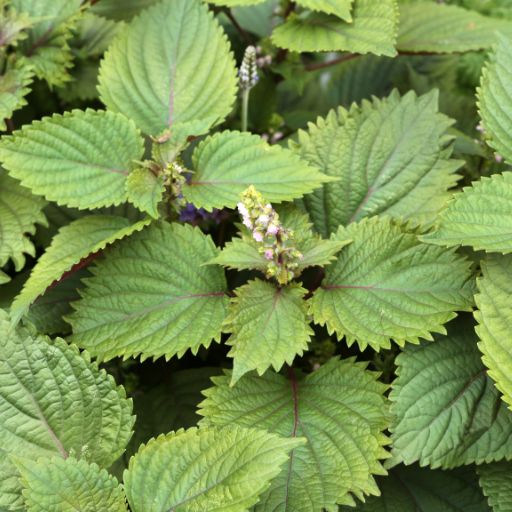
- Origin & History: Native to East Asia; used in Japanese, Korean, and Vietnamese cuisines.
- Appearance: Green or purple serrated leaves.
- Taste & Aroma: Minty, basil-like, with hints of anise.
- Culinary Uses: Sushi wraps, pickles, tempura, salads.
- Health Benefits: High in antioxidants and omega-3s.
- Fun Fact: Red shiso is used to dye Japanese pickled plums (umeboshi).
5. Pennywort (Gotu Kola / Asiatic Pennywort)
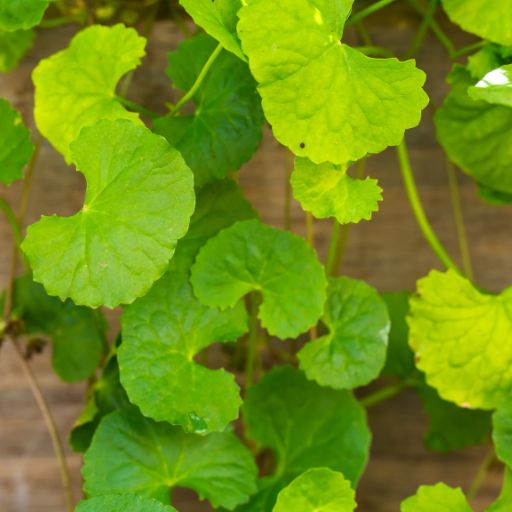
- Origin & History: Grown in South and Southeast Asia; used in both food and traditional medicine.
- Appearance: Small, round, green leaves on thin stems.
- Taste & Aroma: Mild, grassy, slightly bitter.
- Culinary Uses: Herbal drinks, salads, chutneys, soups.
- Health Benefits: Supports circulation and brain health.
- Fun Fact: In Sri Lanka, pennywort salad (gotu kola sambol) is a daily staple.
6. Pineapple Sage
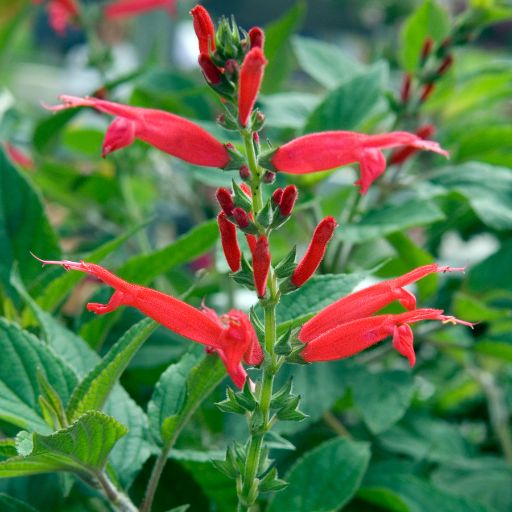
- Origin & History: Native to Mexico and Central America.
- Appearance: Bright green leaves with red tubular flowers.
- Taste & Aroma: Fruity, pineapple-like with herbal undertones.
- Culinary Uses: Teas, fruit salads, desserts, cocktails.
- Health Benefits: Contains antioxidants and may reduce anxiety.
- Fun Fact: The leaves release a fruity aroma when rubbed.
7. Pak Choi (Bok Choy)
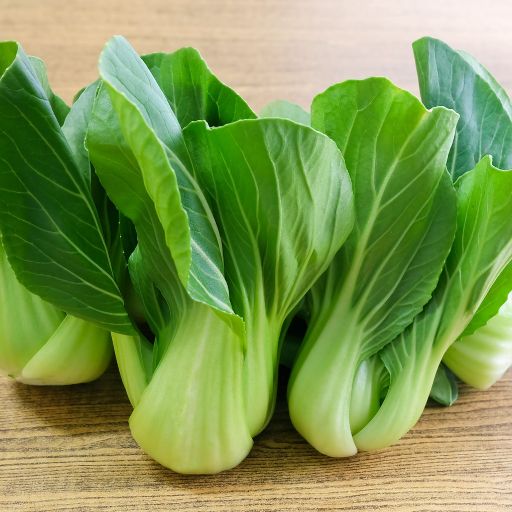
- Origin & History: Native to China; cultivated for over 1,500 years.
- Appearance: Crisp white stems with dark green leaves.
- Taste & Aroma: Mild, slightly peppery, cabbage-like.
- Culinary Uses: Stir-fries, soups, dumplings, steamed side dishes.
- Health Benefits: Rich in vitamin A, C, and calcium.
- Fun Fact: Sometimes called “Chinese cabbage,” though different from Napa cabbage.
8. Papalo
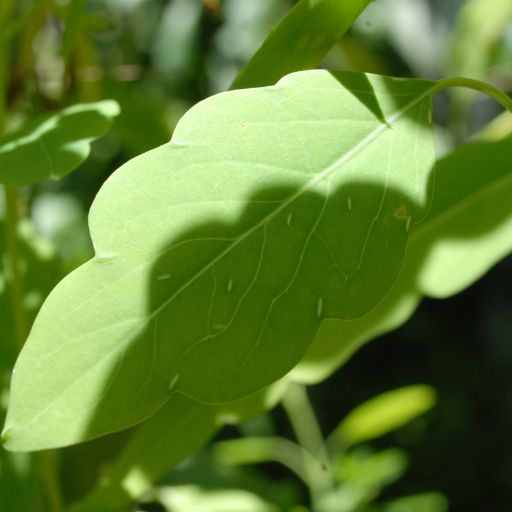
- Origin & History: Native to Mexico and South America.
- Appearance: Flat, oval green leaves with scalloped edges.
- Taste & Aroma: Strong, herbal, reminiscent of cilantro with citrus notes.
- Culinary Uses: Salsas, tacos, sandwiches, salads.
- Health Benefits: Traditionally used to support digestion and circulation.
- Fun Fact: Known as “the summer cilantro” because it thrives in hot weather when cilantro wilts.
9. Pepper Grass (Lepidium sativum / Garden Cress)
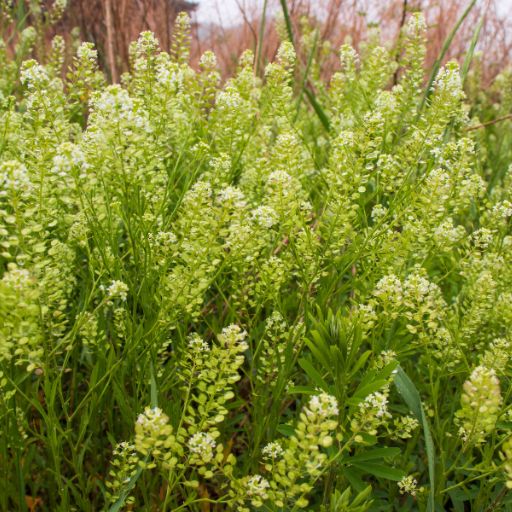
- Origin & History: Grown in the Middle East, Europe, and Asia for centuries.
- Appearance: Small, tender green leaves with delicate stems.
- Taste & Aroma: Sharp, peppery, mustard-like.
- Culinary Uses: Salads, sandwiches, soups, garnishes.
- Health Benefits: Rich in iron and vitamin C.
- Fun Fact: Often sprouted as microgreens for a peppery punch.
10. Pakwan (Indian Herb, Cassia Tora Leaves)
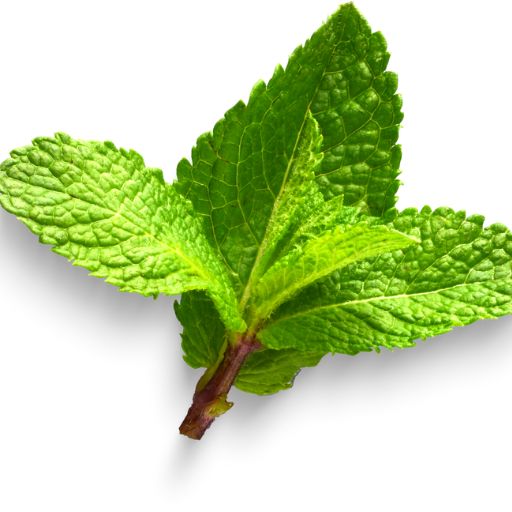
- Origin & History: Native to South Asia; eaten in rural Indian cuisines.
- Appearance: Small green leaves from the Cassia tora plant.
- Taste & Aroma: Slightly bitter, earthy.
- Culinary Uses: Used in curries, dals, and herbal chutneys.
- Health Benefits: Traditionally consumed to support liver and skin health.
- Fun Fact: A seasonal leafy vegetable, often foraged in India.
Conclusion
The letter P is overflowing with flavor—whether it’s the punch of peppercorns, the warmth of paprika, or the freshness of parsley. These spices, seasonings, and herbs remind us how much everyday cooking depends on this single letter, shaping everything from soups to sauces to sweets. Next, we’ll move into the quieter but intriguing world of Q, where rare and surprising ingredients shine.

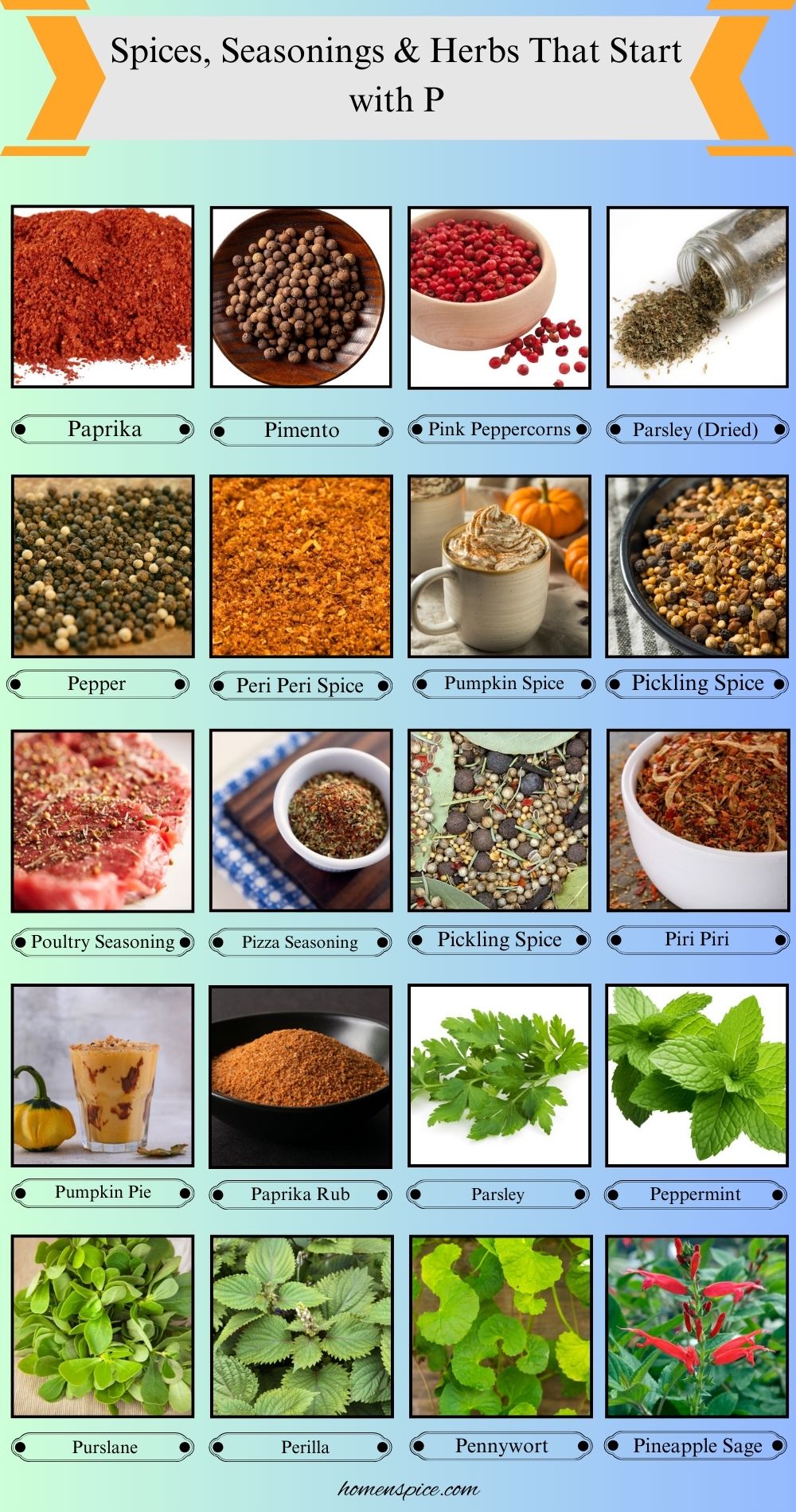
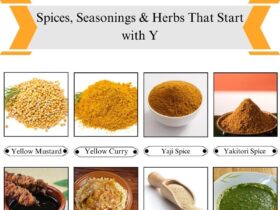
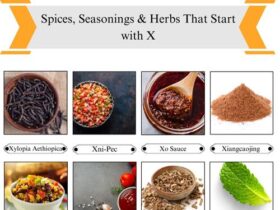
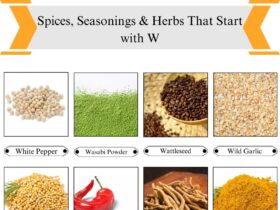
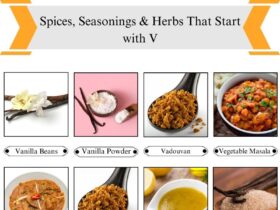
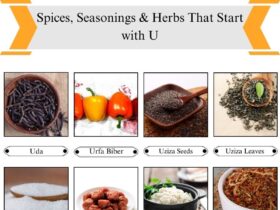
Leave a Reply